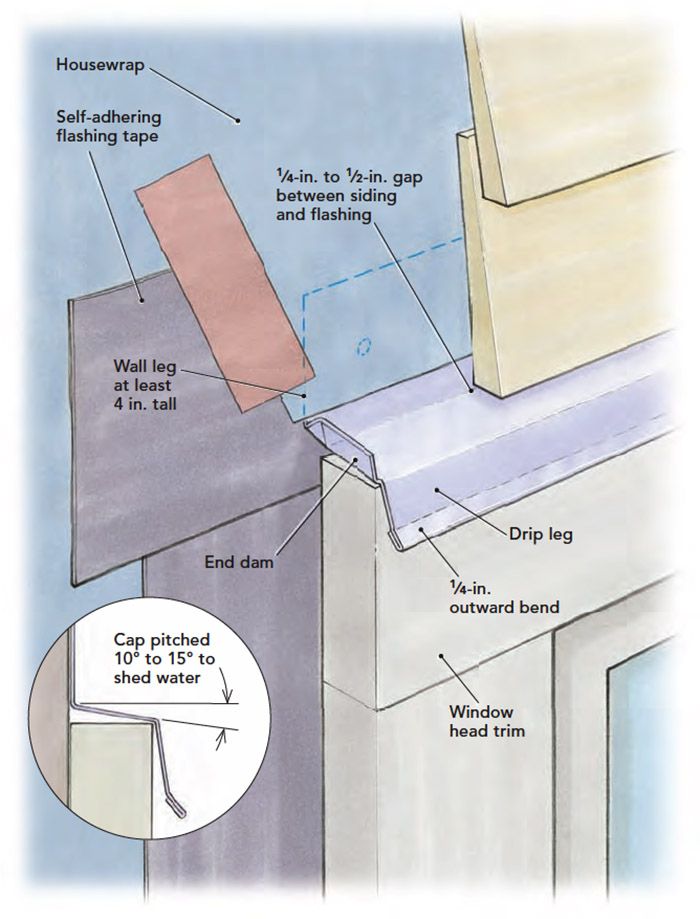Adding Head Flashing
You won’t necessarily find head flashing on windows and doors that have integral flanges because some manufacturers call for it and some don’t

The doors and windows on my home do not have head flashing. Can I add this missing protection?
—David Wolf, via email
Mike Guertin: Head flashing prevents water from leaking in at the joint between the bottom edge of siding and the top of the head trim. You won’t necessarily find head flashing on windows and doors that have integral flanges because some manufacturers call for it and some don’t. That might explain why you don’t see any on your windows and doors. It’s common practice to seal these units to the wall with self-adhering flashing tape and then to lap the housewrap over the top. You can’t go wrong by adding head flashing, however. For flanged windows and doors that have separate trim surrounds but no head flashing over the trim, it would be a good idea to install some. You may be able to remove the trim without removing the siding above it, allowing you to slip a head flashing behind the waterresistive barrier before reinstalling the trim. Before doing that, though, be sure to cut the siding course up by 1⁄4 in. to 1⁄2 in. to leave a space between the bottom edge of the siding and the head flashing. This space will allow water to drain freely. The metal or plastic head flashing should have a wall leg of at least 4 in., although a wall leg shorter than that can be extended by bonding a strip of flashing tape to it. The cap projection should be sloped downward 10° to 15° to readily shed water. Bend the drip leg down at least 3⁄4 in., and give it a slight inward bend. Finish the drip leg with about a 1⁄4-in. outward bend at the bottom edge. You can form end dams to keep water from dripping off the ends of the flashing and getting behind the siding. After fastening the cap flashing to the walls, lap the housewrap over the wall leg. You also can take the extra step of flashing the window and door heads with flashing tape before installing the head flashing. The tape backs up the head flashing in the event that wind-driven water gets behind this primary layer of defense.





